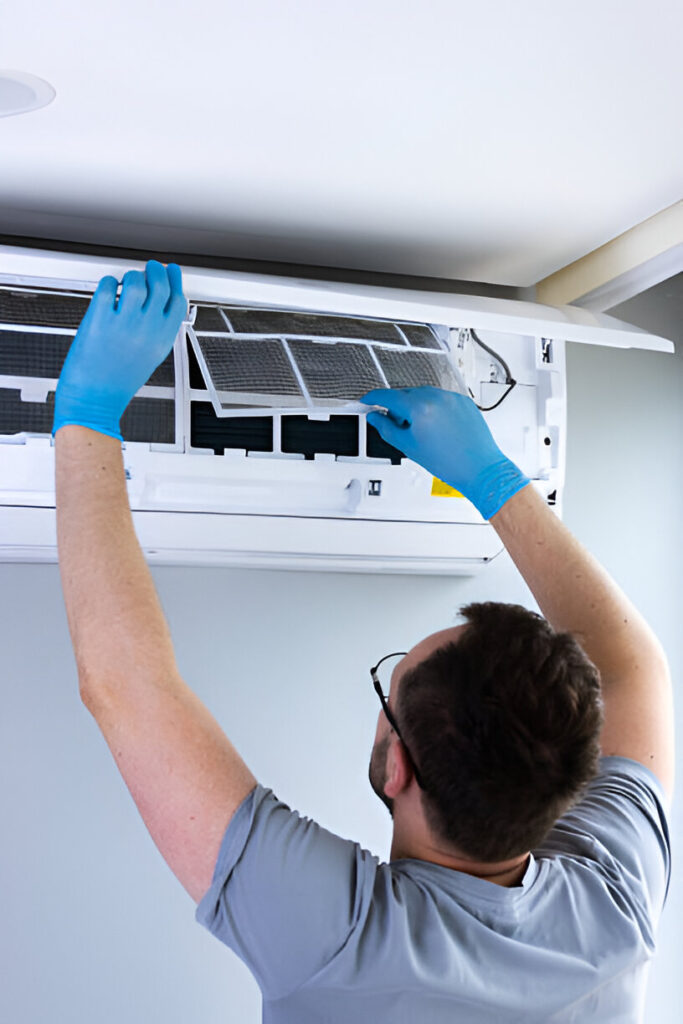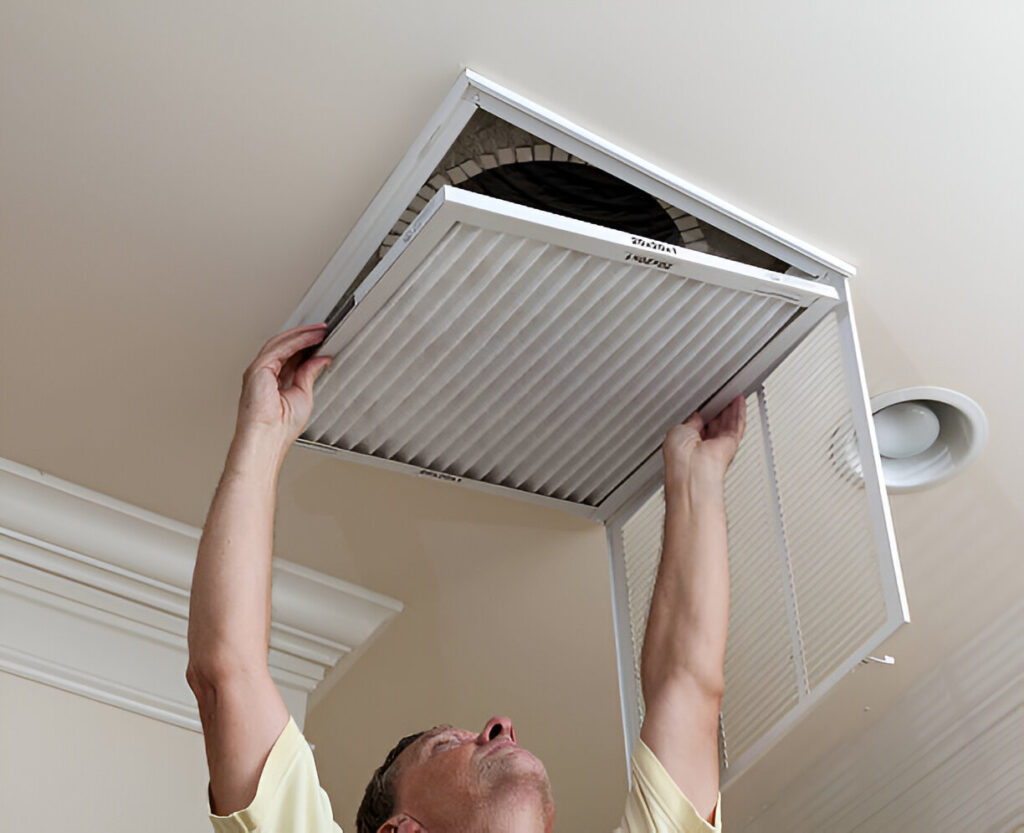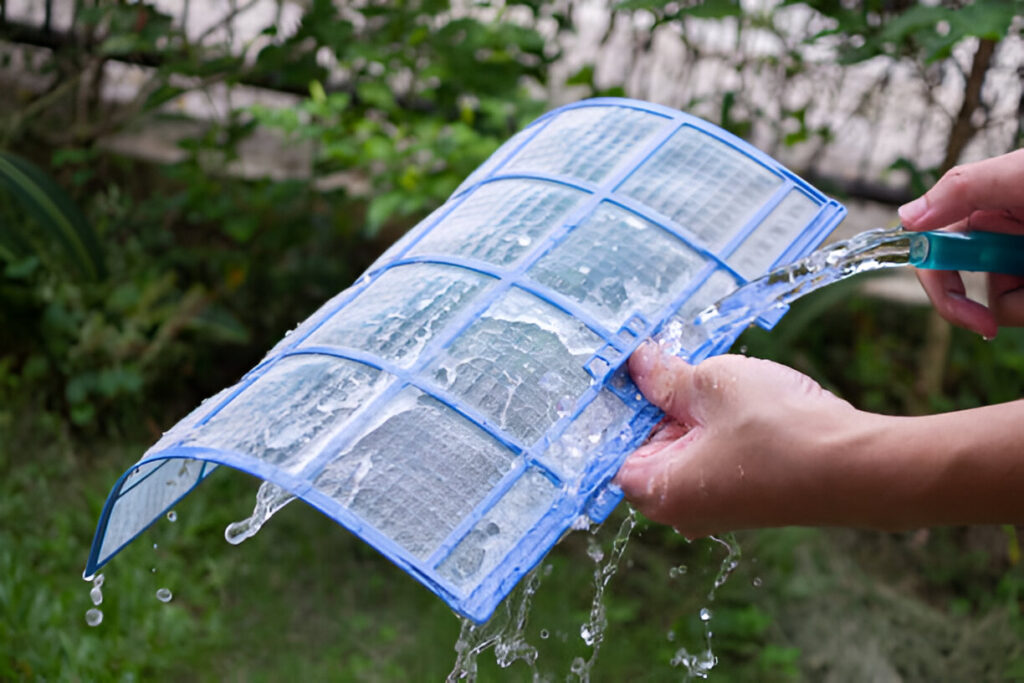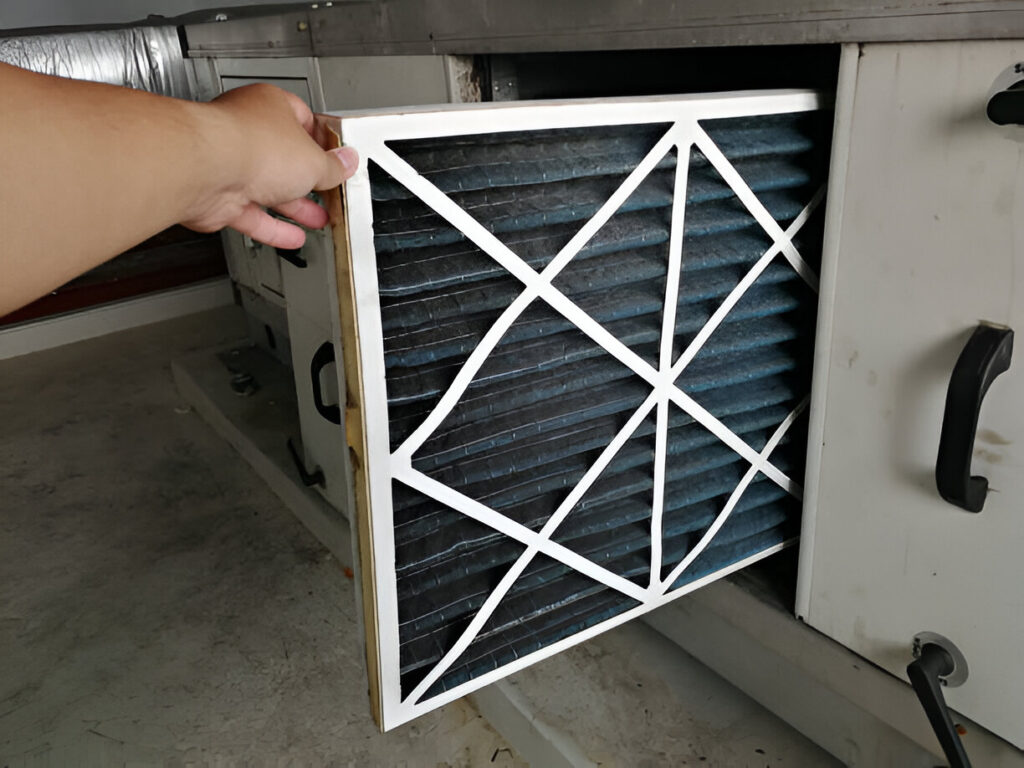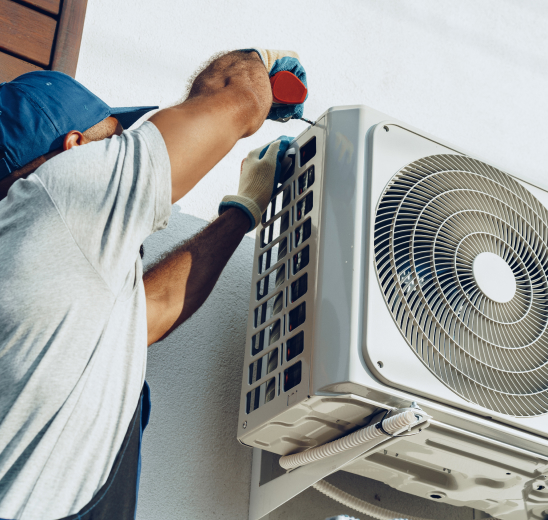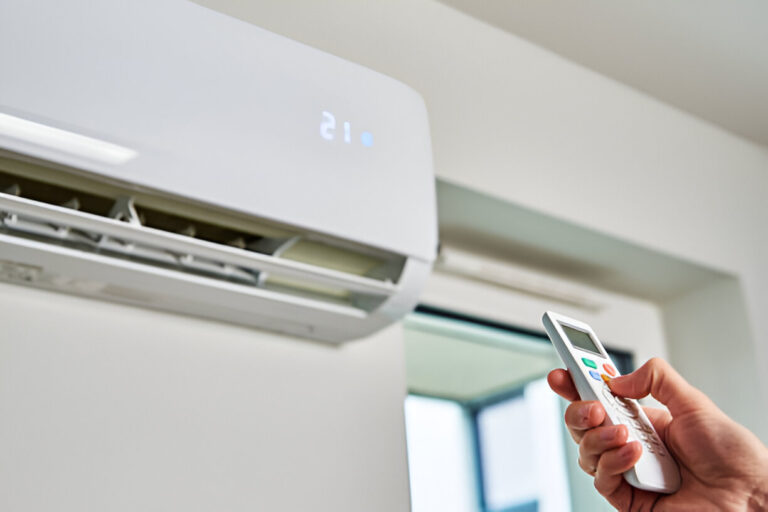How to Clean Your Air Conditioning Filter
If your AC isn’t blowing cold air like it used to, or you’ve noticed a spike in allergies, musty smells, breathing difficulties, or even a sudden increase in your electricity bill, your air filter might be the hidden culprit. A dirty or clogged air conditioning filter can quietly wreak havoc on your indoor comfort, HVAC efficiency, and overall health, yet it’s one of the most overlooked components of home maintenance.
Many homeowners underestimate just how vital regular AC filter cleaning is. In reality, it’s one of the easiest and most cost-effective ways to improve indoor air quality, reduce energy usage, and extend the lifespan of your air conditioning system. A clogged or dirty filter forces your AC to work harder, which drives up your energy bills and can lead to costly repairs. Whether you’re a new homeowner trying to figure things out, a renter looking to stay cool and healthy, or a seasoned DIYer aiming to reduce wear and tear on your system.
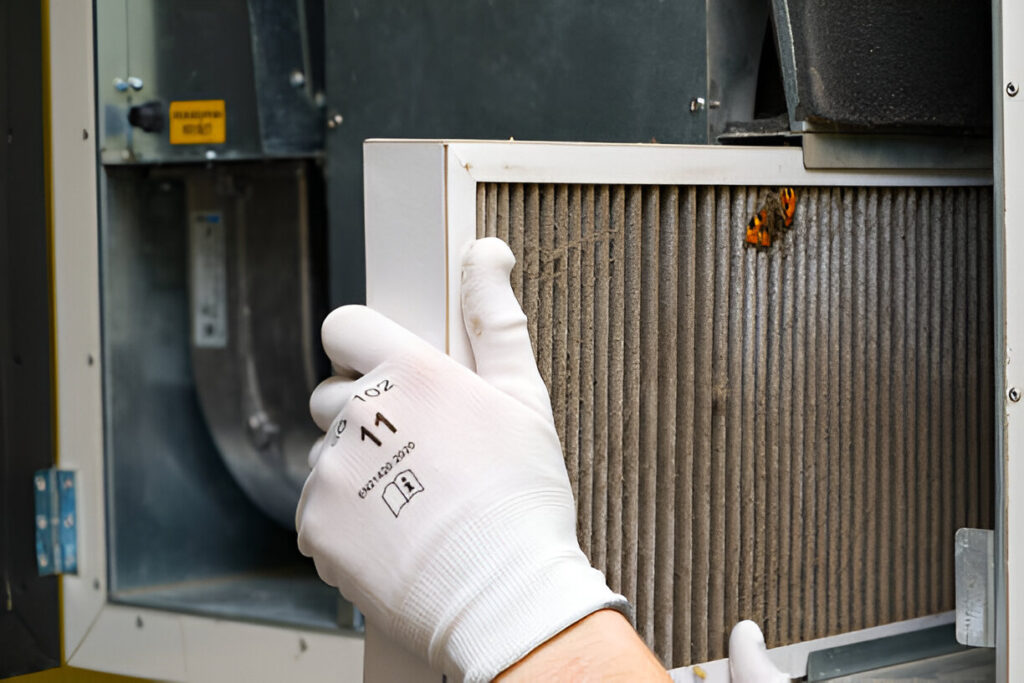
Why Cleaning Your AC Filter Matters
Your air conditioning filter does more than you might think. It’s not just about catching dust; it plays a vital role in the overall function of your HVAC system. When clean, it allows your AC to work efficiently and provides better indoor air quality (IAQ).
Key reasons to clean your air filter:
- Improved airflow: Dirty filters block airflow, forcing your system to work harder.
- Energy savings: A clean filter can reduce energy use by 5% to 15% (U.S. DOE).
- Better air quality: Traps allergens, dust, pet dander, and pollutants.
- Longer system lifespan: Prevents strain on the blower motor and evaporator coil.
- Avoids costly repairs: Many AC service calls result from clogged filters.
What Does an Air Conditioning Filter Do?
An air conditioner filter is designed to catch airborne particles as air returns to the HVAC system. It keeps contaminants out of your home’s air supply and protects the internal components of your air handler or furnace.
Common pollutants your filter traps include:
- Dust and fine dirt
- Pet hair and dander
- Mold spores and pollen
- Smoke and odors
- Microorganisms like bacteria (in HEPA models)
Without a working filter, these particles settle in your ductwork, circulate through your home, or clog your evaporator coil, reducing efficiency and causing long-term damage.
Types of Air Conditioning Filters
Not all air filters are created equal. The type of filter you have affects how often you need to clean or replace it.
1. Disposable Filters (Fiberglass or Pleated):
- Made to be discarded, not cleaned
- Traps basic pollutants
- Replace every 1-3 months
2. Washable/Reusable Filters:
- Typically made of foam, metal mesh, or electrostatic material
- Can be washed and reused for years
- Clean monthly during peak seasons
3. HEPA Filters (High Efficiency Particulate Air):
- Captures 99.97% of particles 0.3 microns or larger
- Not typically washable
- Check manufacturer guidelines
4. Media Filters:
- Large surface area; lasts 6 months to a year
- Professional replacement recommended
How Often Should You Clean or Replace the Filter?
Proper maintenance frequency depends on the type of filter and your household environment.
General Guidelines:
| Filter Type | Action | Frequency |
| Washable filters | Clean | Every 30 days |
| Disposable filters | Replace | Every 1 to 3 months |
| HEPA or media filters | Replace | Every 6–12 months |
Factors That Affect Cleaning Frequency:
- Number of people in the home
- Presence of pets
- Smoking indoors
- Seasonal pollen levels
- Local air pollution
- Allergies or respiratory conditions
Step-by-Step: How to Clean Your AC Filter
- Turn Off Power to the AC Unit: Always begin by switching off the power to your system at the thermostat or breaker box. This protects you from accidental shocks and prevents the system from pulling in unfiltered air while the filter is removed.
- Locate and Remove the Filter: Open the access panel, grille, or unit cover depending on your system type. Carefully slide the filter out to avoid knocking dust into your ducts or indoor space.
- Vacuum Loose Dust and Debris: Using a vacuum cleaner with a soft brush attachment, gently vacuum both sides of the filter to remove as much surface dust and debris as possible.
- Soak in a Cleaning Solution: Fill a basin, bathtub, or large sink with warm water and add a few drops of mild dish soap or a 1:1 vinegar-water solution.
- Gently Scrub for Stubborn Buildup: Use a soft-bristled brush or old toothbrush to lightly scrub away any remaining particles. Avoid using abrasive materials that could damage the filter mesh.
- Rinse Thoroughly: Run clean, lukewarm water over the filter until all soap or vinegar residue is gone. Shake off excess water.
- Allow to Air Dry Completely: Place the filter in a well-ventilated, shaded area to air dry completely. Do not reinstall it while damp, as moisture can cause mold or mildew inside the system.
- Reinsert and Restore Power: Once dry, reinstall the filter in the correct direction (check for airflow arrows). Close any panels or grilles, and turn your system back on.
Where Is Your Air Filter Located?
Depending on your HVAC system, filters may be located in a few different areas:
- Central HVAC systems: Usually in the return air duct, near the blower motor or air handler (often behind a vent grille on the wall or ceiling).
- Ductless mini-splits: Inside the indoor unit, behind the front panel.
- Window units: Behind the front grille or side panel.
- Portable ACs: At the rear or along the side panel.
Tip: Always turn off power before accessing or removing your filter. Consult your system’s manual for exact instructions.
What Happens If You Don’t Clean Your Filter?
Neglecting your air filter can lead to several serious consequences:
- 10–15% higher energy usage
- Excess dust and allergens circulating indoors
- Frozen evaporator coils
- Poor airflow and uncomfortable indoor temperatures
- Increased wear and tear on your HVAC system
- Expensive repairs or premature system failure
If your AC isn’t blowing cold air like it used to, or you’ve noticed an increase in allergies, respiratory discomfort, or your electricity bills, your air filter may be the hidden culprit. Many homeowners underestimate the importance of regular AC filter cleaning. In truth, it’s one of the simplest ways to boost your indoor air quality, improve energy efficiency, and prolong the life of your HVAC system. Routine filter care also helps prevent common AC cooling problems that could otherwise lead to costly system issues.
Can You Clean and Reuse a Disposable Filter?
No. Disposable filters are made of fiberglass or paper-based media that break down when wet.
Why you shouldn’t wash them:
- Reduces filtering ability
- Allows microbial growth
- May cause structural damage
Cleaning Filters in Different AC Units
Proper filter maintenance depends on the type of air conditioning system you have. Each system has different filter designs, cleaning methods, and access points. Here’s how to handle them:
1. Central Air Systems
- Filter Location: Typically found in return air ducts, air handler units, or near the furnace.
- Cleaning or Replacement: Most central HVAC systems use either disposable pleated filters or larger washable ones. If it’s disposable, it should be replaced every 1–3 months. Washable filters should be cleaned monthly.
- Why It Matters: A clogged filter in a central air system can reduce airflow throughout your entire home, strain the blower motor, and significantly raise energy bills.
2. Ductless Mini-Split Systems
- Filter Location: Located behind the front panel of the indoor wall-mounted unit.
- Cleaning Method: Turn off the unit, lift the panel, and remove the mesh filter. Wash it gently with warm water and mild soap. Let it dry completely before reinstalling.
- Why It Matters: Because these units often serve individual rooms, a dirty filter directly affects the air quality and cooling efficiency of that space. Regular cleaning helps maintain quiet, smooth operation and keeps allergens in check.
3. Window Air Conditioners
- Filter Location: Behind the front grille or near the intake vents.
- Cleaning Method: Unplug the unit, remove the front panel, and take out the filter, usually foam or mesh. Rinse under lukewarm water or soak it briefly in a mild detergent solution. Allow it to dry fully before reinserting
- Why It Matters: Window units are compact and can quickly accumulate dust, which reduces cooling output and increases power usage. A clean filter ensures stronger airflow and helps extend the life of the unit.
Final Thoughts: Keep It Clean, Keep It Cool
Cleaning or replacing your air filter is one of the easiest and most effective ways to:
- Improve indoor air quality
- Enhance system performance
- Lower your energy bills
- Extend the life of your AC
If you’re looking for HVAC Contractors In Sioux City , HVAC Repair South Sioux City is the trusted local expert you can count on. Whether you need a quick filter change, emergency repair, or full system diagnostics, our team delivers fast, reliable service to keep your home comfortable year-round. Smart maintenance habits including keeping filters clean and understanding HVAC system installation costs, can help you plan better and avoid major repair expenses down the road.

